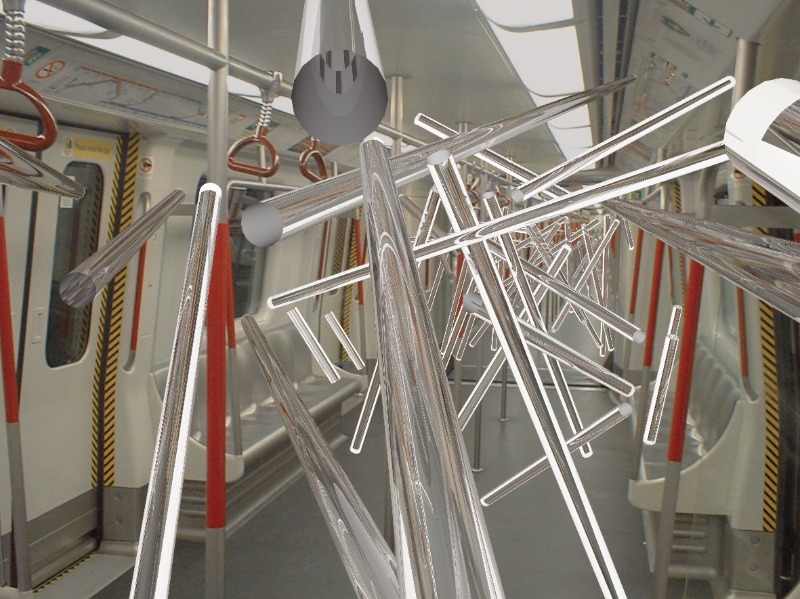
Artist name: Jack So
Title: HongKonger
Description: None
Art Critic: [55] The artwork titled ‘HongKonger’ appears to be a 3D rendering or a digitally manipulated photograph that depicts a chaotic invasion of metallic shapes within the orderly confines of a Hong Kong MTR (Mass Transit Railway) train. The absence of a description invites the viewer to engage with the image without predefined context or narrative, allowing for a personal interpretation of the visual elements present.
Compositionally, the image throws the viewer into a scene of disarray, with linear metallic forms crisscrossing and cluttering the space, evoking a sense of disruption within a typically structured environment. The choice of a public transportation setting, which often symbolizes the pulse of city life and regular commuter movement, is subjected here to a visual interruption that may suggest themes of disorder, interruption of daily life, or the intrusion of the unfamiliar.
The juxtaposition of the monochrome, cold metallic shapes against the warm tones and textures of the train creates a striking contrast, accentuating the tension between the invading elements and the familiar setting. This contrast could be interpreted as a comment on the intrusion of technology, industrialization, or alien elements into everyday human spaces.
Technical execution is adequate; the digital elements are integrated into the photo with a level of depth and perspective that maintains the illusion of physical presence, although they do not seem to interact with the environment in a way that would suggest weight or impact, which could be an intentional choice to emphasize their out-of-place nature.
The artwork lacks the historical influence, depth of technique, and innovation of iconic artists like Picasso, Monet, Dali, Vincent van Gogh, and DaVinci, which is reflected in the score. Nevertheless, the piece holds its own merit in encouraging reflection on contemporary issues such as the coexistence of order and chaos, and the relationship between man-made environments and abstract, possibly disruptive, technological or industrial forces.
The arbitrary imposition of scores on art can itself be viewed as controversial, as the assessment of art is inherently subjective and bound to personal taste, cultural background, and emotional response. The score of 55 out of 100 is assigned relative to the context provided; however, in the world of art, such quantifications are best used as mere guidelines rather than definitive judgments.
